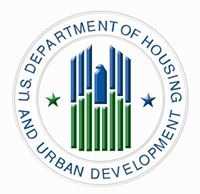Energy Department Announces Major Recovery Act Milestone: 600,000 Homes Weatherized Three Months Ahead of Schedule
Washington, D.C. – December 19, 2011 – (RealEstateRama) — U.S. Energy Secretary Steven Chu today announced that states and territories across the nation have reached the goal of weatherizing more than 600,000 low-income homes– including more than 125,000 multi-family homes like apartment buildings – more than three months ahead of schedule. The Department reached this major milestone as part of its efforts to save energy and reduce home utility bills for families, while creating jobs in communities throughout the country.
On a conference call to make the announcement, Secretary Chu was joined by Minnesota Governor Mark Dayton, who spoke about Minnesota’s efforts and progress on the ground making homes more efficient with weatherization upgrades.
Through the 2009 American Recovery and Reinvestment Act, states and territories supported by the Department’s Weatherization Assistance Program set the aggressive goal to reduce energy waste in approximately 600,000 low-income homes with energy efficient upgrades such as insulation, air-sealing, and more efficient heating and cooling systems. The program is helping families save money on their energy bills and creating thousands of jobs locally – putting carpenters, electricians, and others back to work. While the original target date for completing 600,000 weatherization upgrades was the end of March, 2012, the Department announced today that it had met that objective more than three months ahead of schedule.
“Today the Department of Energy marks a major milestone: we have weatherized more than 600,000 low-income homes and put thousands of people to work through the Recovery Act,” said Secretary Chu. “Across America, DOE’s successful Weatherization Assistance Program has increased the demand for energy-saving products and services, created thousands of skilled jobs, and helped families to reduce energy waste and save money.”
On average, the program reduces energy consumption for low-income families by up to 35 percent, saving them more than $400 on their heating and cooling bills in the first year alone. Nationwide, the weatherization of 600,000 homes is estimated to save more than $320 million in energy costs in just the first year.
Supporting a Domestic Building Retrofit Industry
Today, buildings account for nearly 40 percent of U.S. energy consumption and carbon emissions. Making improvements in building efficiency will reduce energy use, lower utility bills, decrease carbon pollution and support American jobs that can’t be outsourced. The Department of Energy’s Weatherization Assistance Program is part of the broader effort to address energy waste in buildings, help grow the domestic building retrofit industry, and give families and businesses more information and access to energy efficiency upgrades.
Other Department initiatives to improve energy efficiency in commercial, residential and industrial buildings include:
The Better Buildings Neighborhood Program is working with hundreds of neighborhoods across the country to promote energy efficiency upgrades in homes and buildings. The partners are making it easier for homes and business owners to access energy efficiency experts and complete building upgrades while supporting a growing energy improvement workforce.
With the Better Buildings Challenge, sixty major companies, universities, hospitals, retailers and cities and states are stepping up to upgrade 1.6 billion square feet of commercial and industrial space by 2020, and organizations have committed nearly $2 billion of private capital to finance energy efficient projects.
The “Home Energy Score” pilot program offers homeowners straightforward, reliable information about their homes’ energy efficiency. Under this voluntary program, trained and certified contractors use a standardized assessment tool developed by DOE to quickly evaluate a home and generate useful, actionable information for homeowners or prospective homebuyers.
The Department of Energy is developing voluntary Workforce Guidelines for Home Energy Upgrades, a comprehensive set of guidelines for workers in the residential energy efficiency industry. The guidelines help build and expand the skills of the workforce, ensuring the quality of the work performed, while laying the foundation for a more robust worker certification and training program nationwide.
And to improve access to financing, the Department of Housing and Urban Development has stepped in and launched the PowerSaver pilot program, partnering with eighteen national, regional and local lenders to offer qualified borrowers low-cost loans to make energy-saving improvements to their homes. These PowerSaver loans offer homeowners up to $25,000 to make energy-efficient improvements of their choice, including the installation of insulation, duct sealing, replacement doors and windows, HVAC systems, water heaters, solar panels, and geothermal systems.
DOE’s Office of Energy Efficiency and Renewable Energy invests in clean energy technologies that strengthen the economy, protect the environment, and reduce America’s dependence on foreign oil. Learn more about DOE’s effort to enable low-income families to permanently reduce their energy bills by making their homes more energy efficient.
News Media Contact: (202) 586-4940













